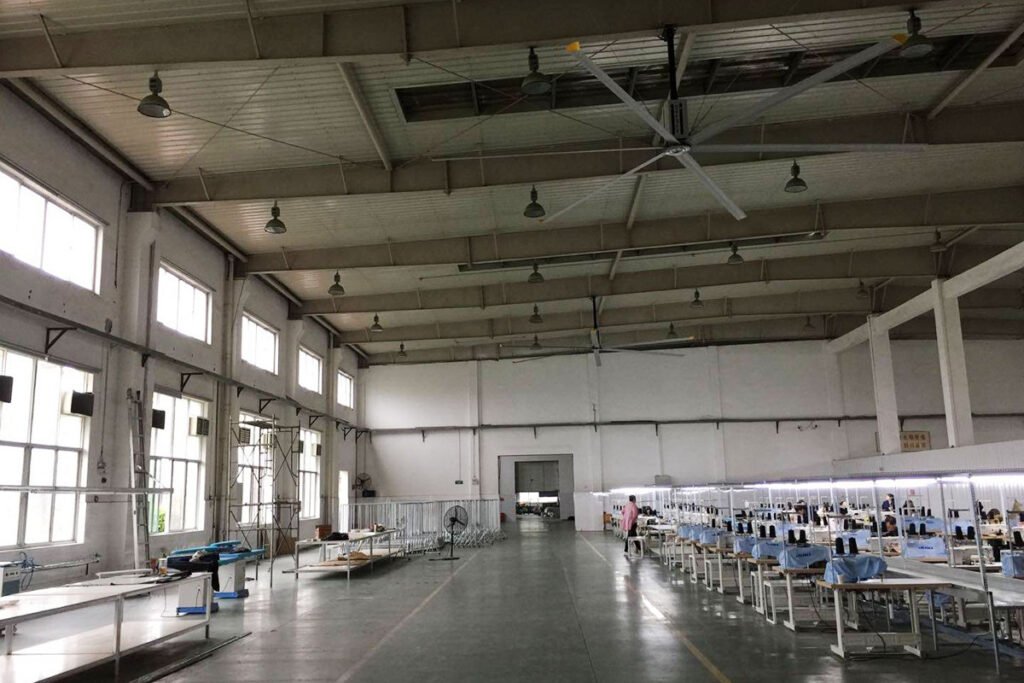
In clothing factories, the utilization of HVLS (High Volume, Low Speed) ceiling fans is a strategic choice that enhances the working environment and boosts productivity. Here’s a concise summary highlighting the key benefits and features of using HVLS fans in this context:
- Improved Air Circulation: HVLS fans effectively distribute air throughout the factory, equalizing temperature and reducing hot spots, which is essential for maintaining a comfortable working atmosphere.
- Energy Efficiency: These fans consume less power than traditional HVAC systems, leading to significant energy savings. The large fans from manufacturers like Air21xx can cover vast areas with low energy consumption.
- Noise Reduction: Despite their size, HVLS fans operate quietly, minimizing distractions and contributing to a more comfortable and focused work environment.
- Worker Comfort and Productivity: The gentle breeze from HVLS fans, such as those from Air21xx, increases worker comfort by reducing fatigue and heat stress, which in turn can enhance productivity.
- Versatility: HVLS fans are adaptable to various areas within a clothing factory, from production lines to storage and office spaces, providing uniform cooling and air circulation.
- Durability and Safety: Built with robust materials, HVLS fans are designed for long-term use in industrial settings. Features like safety components from manufacturers like Air21xx ensure the fans’ reliability and safety.
- Environmental Benefits: By reducing the need for air conditioning, HVLS fans help lower greenhouse gas emissions, aligning with sustainability goals.
- Global Support: Companies with a global presence, such as Air21xx, offer local support and a range of fans to meet the specific needs of clothing factories worldwide.
In conclusion, HVLS ceiling fans are a valuable addition to clothing factories, providing an effective cooling solution that supports worker well-being, saves energy, and contributes to a sustainable operation.
